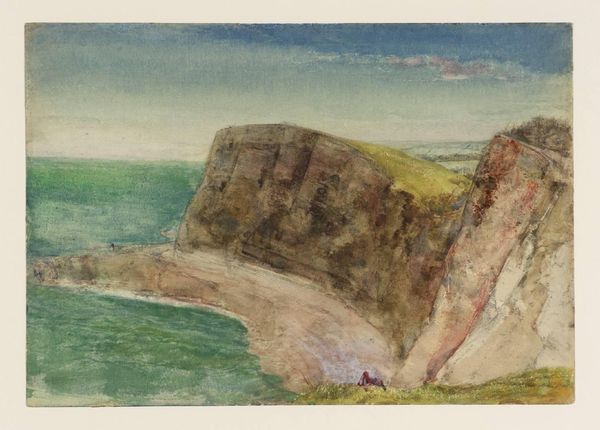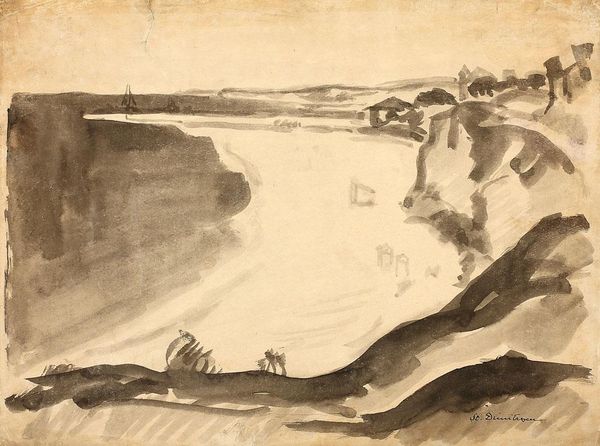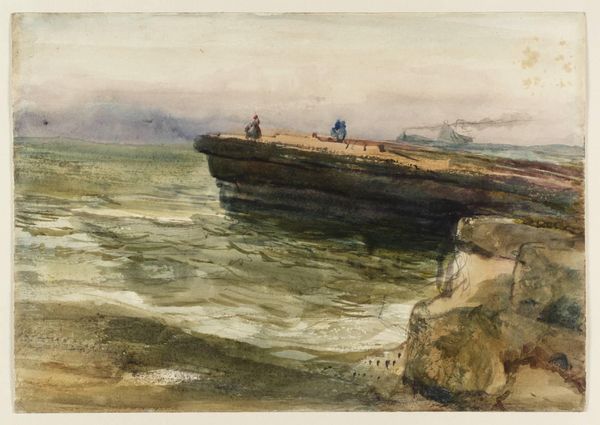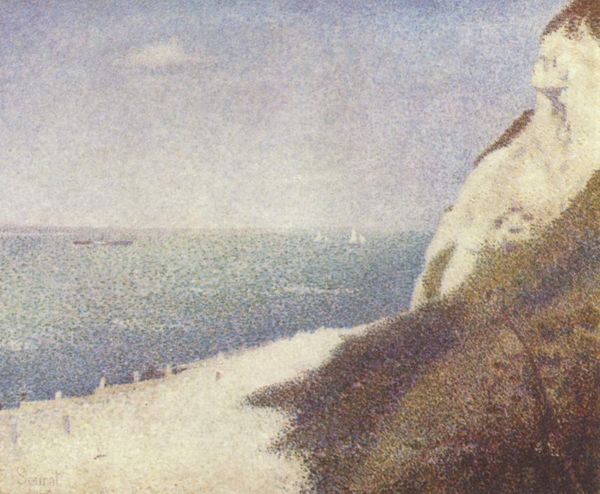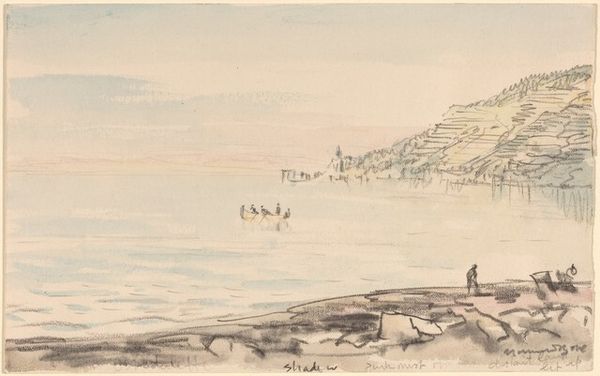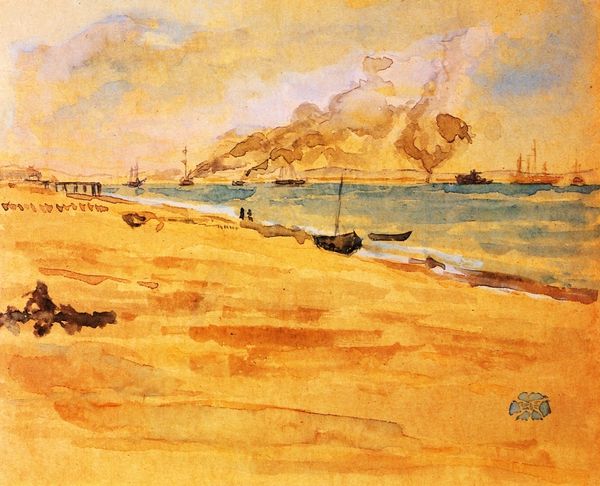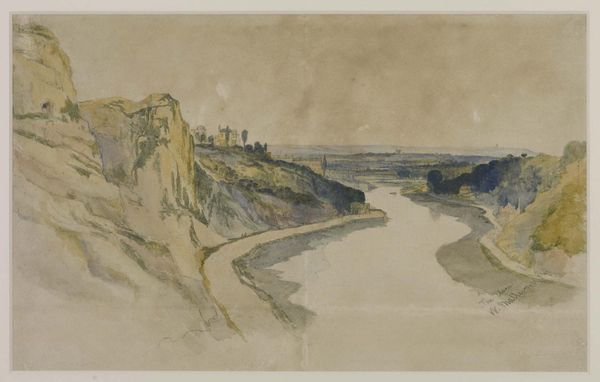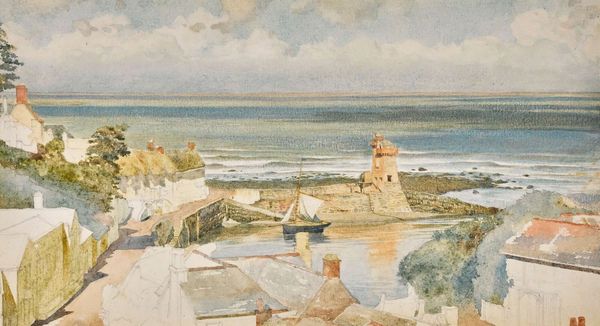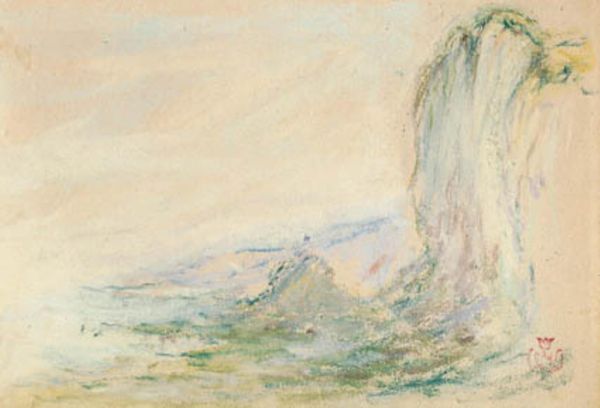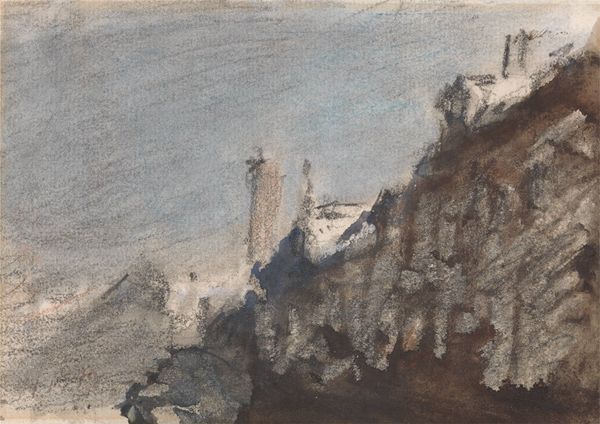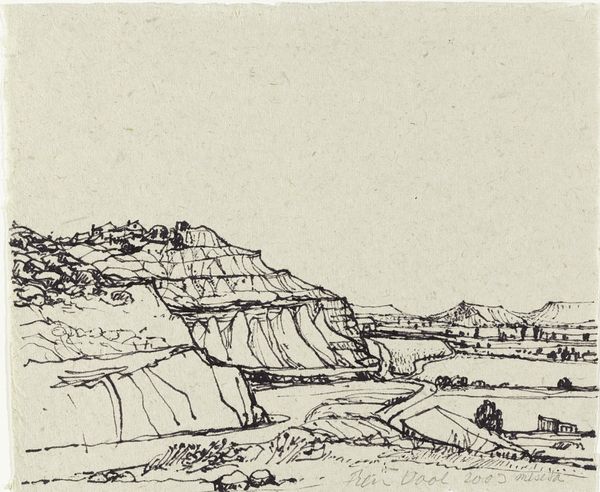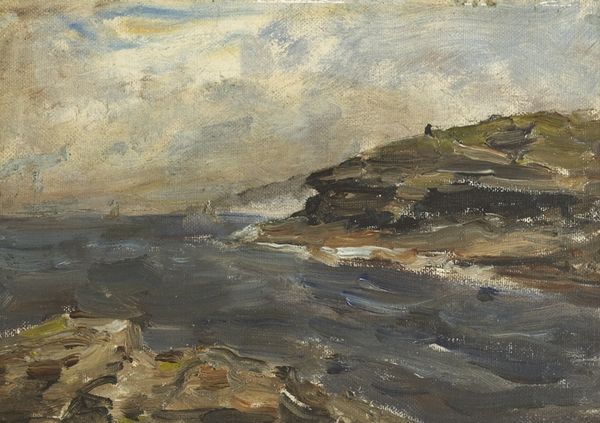
Dimensions: height 132 mm, width 199 mm
Copyright: Rijks Museum: Open Domain
Curator: What a compelling watercolor! This is Eugène Delacroix's "The Chalk Cliffs at Dieppe," painted between 1852 and 1855. It’s currently residing here at the Rijksmuseum. Editor: It hits me like a dreamscape, all soft edges and muted tones. It’s massive but strangely delicate. Melancholy, too. It’s almost as if the cliffs are exhaling a sigh. Curator: Absolutely! Notice the composition: The colossal cliff face dominates, rendered with these subtly modulated washes of color. Delacroix guides our eye upward, drawing our attention to the precarious figures perched atop, then sweeping down again into the textured foreground. He is doing plein-air landscape in a masterful, yet simple manner. Editor: Those figures are like tiny exclamation points, accentuating the sheer scale and implacability of nature. The sky, though—it is a character unto itself. Curator: I think the diffused light, almost obscuring the boundary between sky and sea, evokes the sublime, and of course, the feelings associated with romanticism. And he gets that effect primarily through color and tone— how the umber in the cliff face seeps into the greys of the sky! What an observation. Editor: I find myself pondering temporality when faced with Delacroix's use of watercolours. What I find astonishing is the transparency and depth—allowing light to permeate and resonate on the canvas. Delacroix captures a fugitive moment in time. One senses, looking at this scene, both an acute consciousness of history and awareness that nothing will ever stay. Curator: A testament to watercolor's unique capacity for capturing ephemerality, certainly! But also how the Romantic artists captured the emotional intensity that still resonates with us. Editor: Well, spending time in its presence certainly has its advantages. The scale and softness has its appeal. Thanks for bringing a painting from Delacroix, I think that his technique of working plein-air added another perspective. Curator: It’s been my pleasure! I hope the image resonates and transports you back to the coasts of Dieppe in the 1850s.
Comments
No comments
Be the first to comment and join the conversation on the ultimate creative platform.

